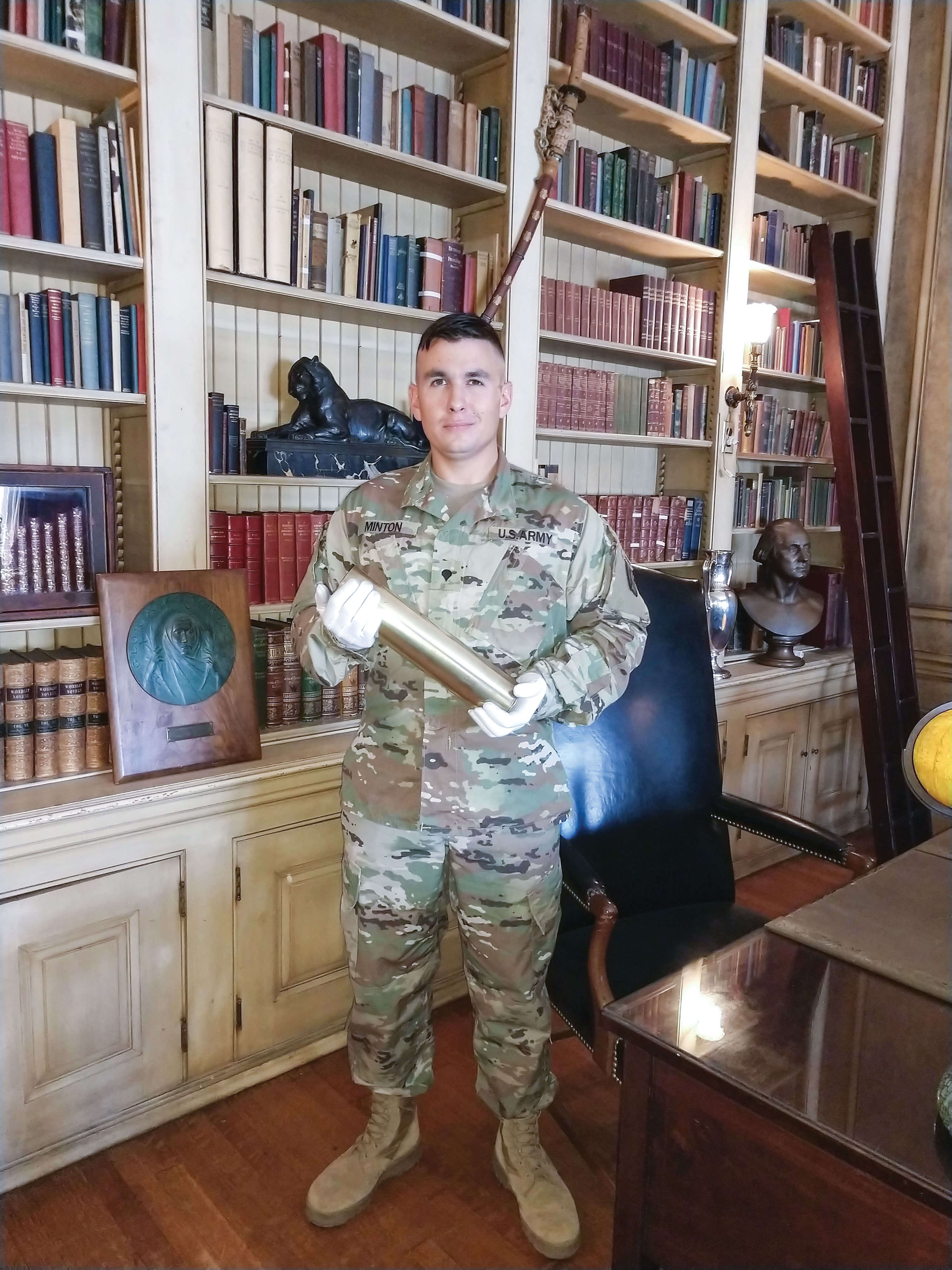
Sherlock in Fatigues
An alumnus tracks down two WWI artifacts, and in the process helps make Army history.
In the early morning hours of October 23, 1917, the American Expeditionary Force in Bathelémont, France, fired into the German lines—the first round fired by the U.S. against the Imperial German Army during World War I.
Spc. Thomas Minton ’06 knows the details of the event well. How the soldiers of C Battery, 6th Field Artillery Regiment, dragged a 3,400-pound gun up a muddy hill outside of town in pitch darkness. How they wore gas masks because of lingering fumes from German mustard gas. How they fired that first shot at precisely 6:05:10 a.m.
But facts alone weren’t sufficient. Minton wanted to track down the gun and shell casing used that fateful morning and reunite them.
“My passion in life is preserving the legacy of the American soldier for future generations, and making sure that nobody forgets about him,” says Minton, a regimental historian for the 3rd Battalion, 6th Field Artillery Regiment, 1st Brigade Combat Team, 10th Mountain Division (Light Infantry) in Fort Drum, New York. “By the grace of God, I found myself at the right time, at the right place, to tell the Army story and to help make Army history.”
Minton began planning the 3-6 FAR’s celebration of the shot’s centennial in May 2016, giving him ample time to play Sherlock in fatigues. He knew the shell cas- ing from that first shot had been sent to then President Woodrow Wilson. But where was it now?
Minton, a field artillery fire control specialist, whose myriad duties also include serving as his unit’s public affairs representative, social media administrator, and photographer, started following up on possible leads during his free time.
One was the Woodrow Wilson House in Washington, D.C. As it turned out, the shell casing had sat on the president’s bedroom mantel since 1921.
Minton can close his eyes and relive the day in October 2016 when he traveled to D.C. to collect the casing. Over 100 years old, it had been prepared for travel and was enclosed in a box and sheathed in acid-free paper and bubble wrap. Minton donned a pair of white archivists’ gloves and unwrapped it.
“I’m holding the United States Army’s Field Artillery equivalent of the Holy Grail,” he thought. The gravity of that thought carried over to his rental car, where he cautiously buckled the box into the passenger-side seat before “very carefully” driving back to Fort Drum.
Last fall, when 3-6 FAR held a ceremony marking the centennial of that first shot being fired, the casing was on display for all to see thanks to Minton and his efforts. Unfortunately, the gun that had fired the shot was not.
Minton had been searching for the M1897 75mm howitzer all along as well, but it wasn’t until just before the centennial that he found it. As it turned out, the massive weapon was hiding almost in plain sight less than a five-hour drive away.
The West Point Museum had kept it since the summer of 1918—a minor miracle considering that many antique weapons were sacrificed for scrap drives during World War II, says Minton.
Earlier this year, Minton and his wife, Kimberly, drove the shell casing back to Washington, D.C., detouring through West Point, where eager museum staffers assembled. The shell casing and the gun were reunited for the first time since 1917.
“My hair stands up just thinking about it,” says Minton.